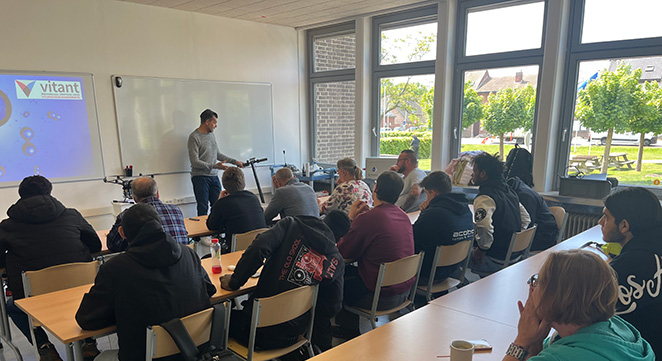
4 sessions, 48 students
The GRIT VET Pilot focused on aligning technical education with the fast-changing demands of the green industrial transition. Partners from across the North Sea region co-created a modular training package for EQF level 4 technicians, designed to integrate sustainability and innovation directly into vocational curricula.
The pilot built on extensive stakeholder input from education providers, training centres, and regional industries. In the Province of Antwerp, consultations in the port and industrial areas identified strong demand for competences related to electrification, hydrogen, circular production, and energy efficiency. Similar needs were echoed in Hamburg and other GRIT regions, allowing the consortium to define a shared interregional framework adaptable to local contexts.
The resulting VET module offers a comprehensive curriculum covering climate impact, energy production, storage, industrial applications, and safety. It combines classroom theory with workplace-oriented exercises and real business cases contributed by regional companies. The pilot reached more than 60 participants, including 40 students and 20 trainers or company mentors, and demonstrated how flexible module design can support both education and upskilling programmes.
Key Learnings:
- Collaboration between education and industry is crucial to keeping curricula relevant.
- Flexible, modular design allows regions to tailor content to specific labour market needs.
- The module bridges technical learning with sustainability awareness, preparing a workforce ready for the green transition.
Key Figures:
👷 60+ participants 🎓 48 students 👩🏫 10 trainers & teachers 🌍 2 partner regions involved
